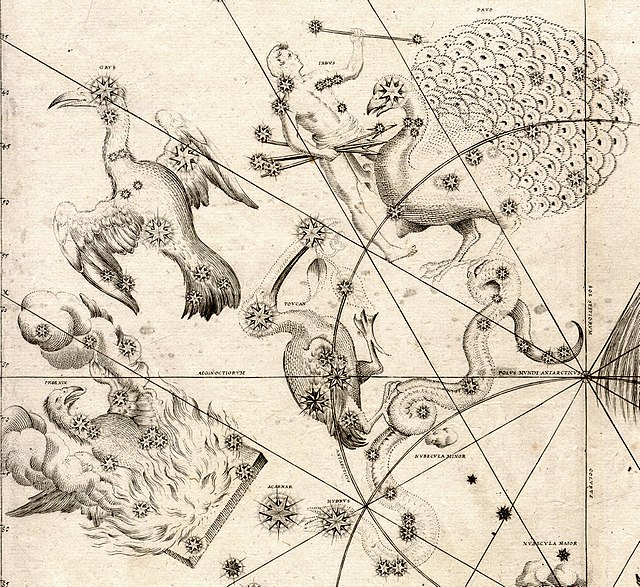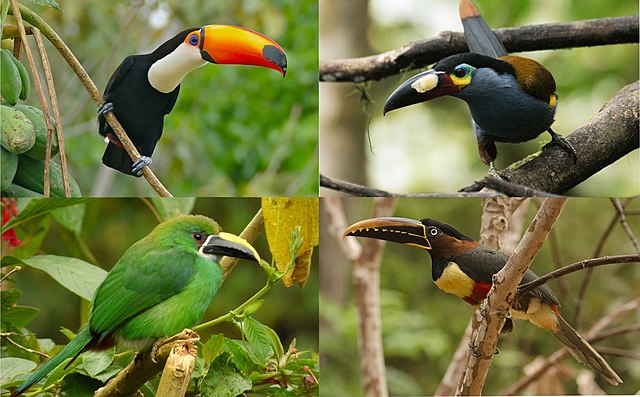Tucana is a constellation of stars in the southern sky, named after the toucan, a South American bird. It is one of twelve constellations conceived in the late sixteenth century by Petrus Plancius from the observations of Pieter Dirkszoon Keyser and Frederick de Houtman. Tucana first appeared on a 35-centimetre-diameter (14 in) celestial globe published in 1598 in Amsterdam by Plancius and Jodocus Hondius and was depicted in Johann Bayer's star atlas Uranometria of 1603. French explorer and astronomer Nicolas Louis de Lacaille gave its stars Bayer designations in 1756. The constellations Tucana, Grus, Phoenix and Pavo are collectively known as the "Southern Birds".
The "southern birds" as seen in Johann Bayer's Uranometria. Tucana (as "Toucan") is in the middle.
The constellation of Tucana, the toucan, as it can be seen by the naked eye
Sidekick or star of the show?
Most of the Small Magellanic Cloud lies within Tucana.
Toucans are Neotropical members of the near passerine bird family Ramphastidae. The Ramphastidae are most closely related to the American barbets. They are brightly marked and have large, often colorful bills. The family includes five genera and over 40 different species.
Toucan
The lettered aracari is the smallest species of toucan.
The toco toucan is the largest species of toucan.
Spot-billed toucanets have smaller bills than Ramphastos toucans.








